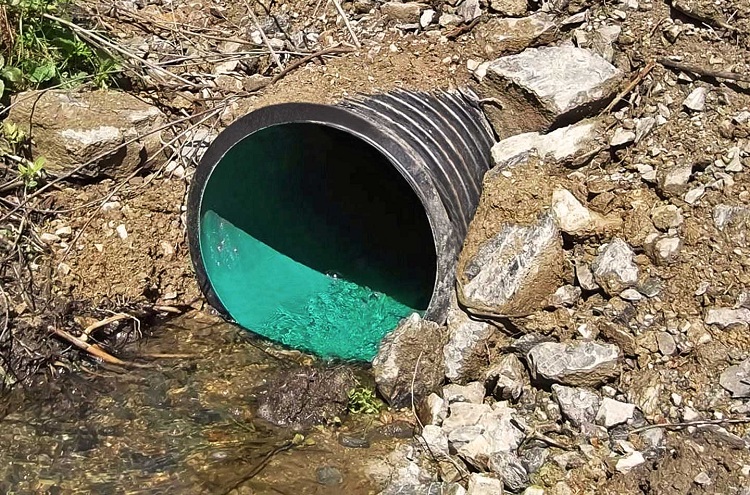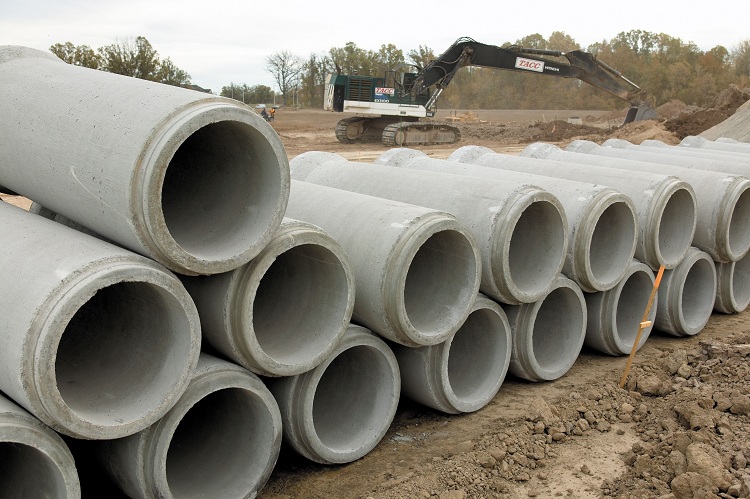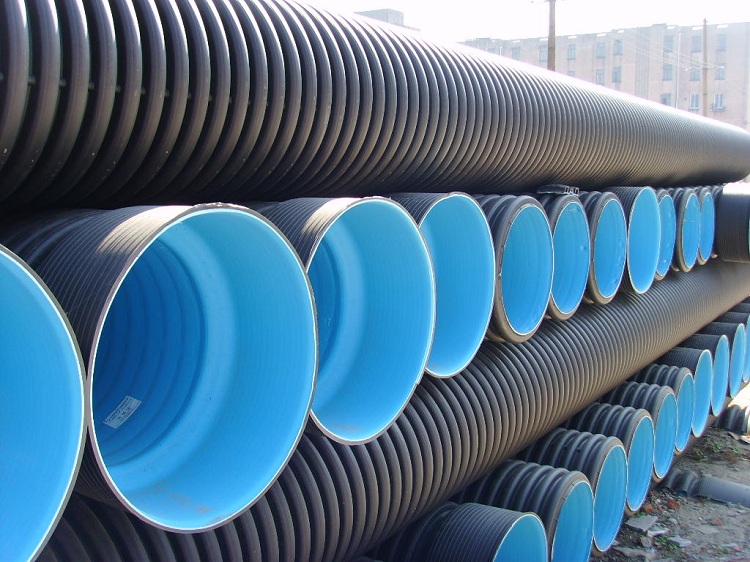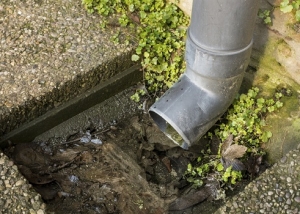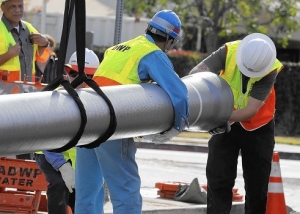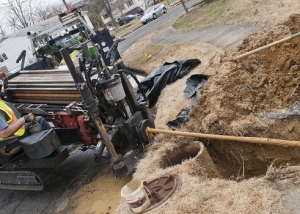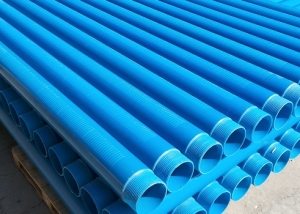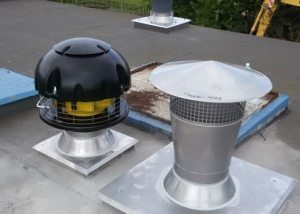Pipes for storm sewers act as a conveying element of the system. On them by gravity rain or melt water moves from the receiving device to the collector. To ensure the movement of drains by gravity, it is necessary to lay pipes for stormwater under the correct slope. Otherwise, either the drain will work inefficiently, or the pipes will become silted.
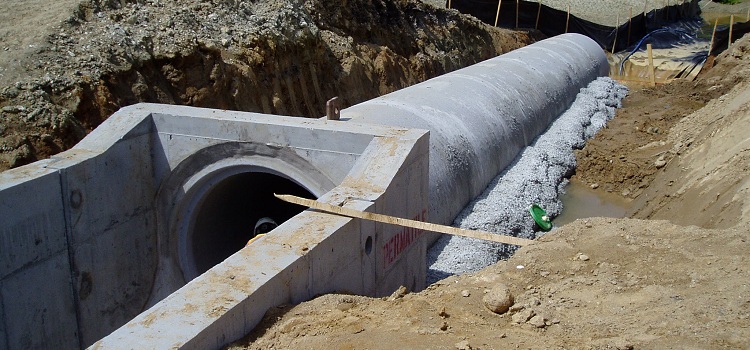
Storm sewage provides the collection and transportation of rain and melt water, for it you can use pipes of various types
Content
How is the storm sewer
In order to understand what role pipes play for storm sewers, you need to understand what storm drains are in general. This is an integral part of a well-maintained residential area. She collects and discharges rain and melt water. The storm sewage system consists of:
- storm water inlets (funnels), door pallets and door trays;
- pipes or trays (gutters);
- filters (sand traps)
- wells;
- receiving collectors.
In this system, storm sewer pipes play the role of transport arteries through which rain and / or melt water drains must be transported without any delay.
Choosing pipes for storm sewers, proceed from the type of system in which they will be operated:
- Open. It is arranged if the volumes of effluents are small. According to the trays and gutters, drains falling into them throughout the entire system are redirected to the channels.
- Closed. Pipes are laid underground, serving to redirect wastewater into storm water inlets.
Storm Pipe Requirements
The pipe used in the storm sewage system is not exposed to external compression pressure, since water moves by gravity along them. Therefore, the list of requirements for pipes intended for the movement of storm sewer drains is not particularly picky. They must be different:
- durability. This requirement stems from the nature of the operating conditions. A storm sewer system is equipped for decades of reliable and uninterrupted operation. Pipes will have to withstand certain shock loads. Mainly, in conditions of closed storm sewers, they will be subjected to mechanical action of poured soil;
- resistant to ultraviolet radiation. Of course, this requirement is important for pipes of an open storm sewer system that are exposed to direct sunlight. In such cases, you should not use structures made of materials sensitive to ultraviolet radiation, so as not to reduce the strength of individual sections and not to disrupt the performance of the system as a whole;
- heat resistance. High temperatures will not threaten the integrity of the pipes, but the effect of low temperatures should not have a destructive effect on the material of the structure;
- resistance to aggressive chemicals.Elements of a closed storm sewer are underground, therefore, they are subjected to the destructive effect of substances contained not only in sewage, but also in the soil, which are characterized by high chemical activity. The material of the elements that make up the storm sewer is selected from among chemically inert and not susceptible to corrosion;
- minimum hydraulic resistance in the cavity part. The inner surface of the pipe should be as smooth as possible. This achieves an increase in throughput, and another important advantage - siltation will not occur, accumulations of sand, dirt and any debris will not form.
Traditional types of pipes for storm sewers
The choice of materials for manufacturing is determined by operational requirements. Traditionally, for storm sewers used products:
- cast iron. Their advantages are durability and reliability, high strength, resistance to temperature extremes and the effects of chemically active substances. The fragility of cast-iron structures does not allow them to be used in conditions where the appearance of shock loads is possible. The disadvantages of cast iron should also be added to its considerable cost and heaviness;
- steel. They are distinguished by all the advantages of cast iron products, combining them with flexibility, resistance to shock. But the high cost of steel has led to the actual displacement of this material from storm sewer systems, where its advantages will for the most part never be in demand;
- concrete. Resistant to corrosion and high loads, not destroyed by prolonged exposure to moisture. Concrete structures are used in large storm sewer systems when a very high throughput is required, achieved by increasing the diameter of the products;
- asbestos concrete. Not subject to decay or corrosion. High mechanical strength and durability, low coefficients of hydraulic resistance and linear thermal expansion are noted. The undoubted advantages of asbestos-concrete products, however, do not contribute to maintaining their previous scale of use. Perhaps the main role in this is played by stringent environmental requirements.
Heavy products, among other things, are very inconvenient to mount and dock. It is especially inconvenient to waterproof the joints. When installing a storm sewer system, accented blows often occur that destroy a fragile product. With a long stay underground, the top layer of asbestos-concrete products is subject to chemical decomposition. Naturally, the reliability of the design is reduced.
Note! Asbestos contained in products in some countries is generally forbidden to use in housing.
Traditional materials are being used less and less, mainly for two reasons:
- high (or relatively high) cost;
- heavy weight, predetermining difficulties with transportation and subsequent installation.
Storm sewage from modern materials. PVC
Now, for storm sewers, pipes are made from various polymeric materials, which can be:
- Flexible or rigid.
- Single or double layer.
- With a corrugated or smooth surface.
- Different in ring stiffness.
The most common polymer structures for storm sewers are:
- polyvinyl chloride (PVC);
- multilayer corrugated;
- fiberglass.
PVC pipes are rigid single-layer products, similar to those used for house sewage. The rigidity of the structure necessitated the use of fittings in those areas where the pipeline turns.External sewer networks are equipped with pipes with a diameter of 110 mm or 160 mm, painted in orange. Their strength characteristics are such that they allow the use of a storm sewage system in a closed system at a depth of four meters.
Separate varieties are allowed to be applied at a greater depth, reaching a ten-meter mark. PVC products are equipped with rubber seals, which facilitates their installation. On a smooth inner surface, gravity of water passes with high throughput. Among the shortcomings of PVC products there is a limited length (it reaches only three meters) and rigidity.
Important! The latter property increases the cost of using PVC, since the installation of a complex profile network full of bends increases the need for installing numerous shaped products.
Corrugated and fiberglass pipes
Multilayer products are created both from monopolymers (polyvinyl chloride or polypropylene), as well as multicomponent ones. For example, a smooth inner layer is formed from low-pressure polyethylene, and polypropylene is used to make the reinforcing outer layer. An external corrugated shell is attached to such a product.
The corrugated storm pipe is distinguished by excellent operational characteristics. The use of corrugated shell allows to achieve a special ring stiffness. At the same time, flexibility is not lost, which makes it possible to carry out installation of sections with a complex configuration and numerous turns without the use of bends, fittings and other shaped parts.
An advantage should also be attributed to the fact that for installation you can purchase a precisely defined number of products sold both in bays and in meter.
The joining of multilayer corrugated products is carried out in two ways, depending on in which form they are released:
- In a bell, using special sealing rubber rings.
- Welding or couplings.
If it is necessary to use large diameter pipes in the storm sewer system, they resort to the use of fiberglass products. Fiberglass is lightweight and extremely strong, chemically inert and durable. The environmentally friendly design may well last more than half a century. Exact and tight joining of fiberglass elements is carried out through the use of special two-cone couplings. Grooves are grooved on the inner surface of the coupling, allowing the installation of sealing elastomeric rings at the edges and in the center.
Features of installation of storm sewer pipes
Pipe laying is preceded by drawing up a scheme that takes into account the features of the terrain. Mounting a closed storm drainage system, trenches are dug to a depth below the level of soil freezing. If this is not possible, it will be necessary to carry out thermal insulation to prevent defrosting, and waterproofing, protecting the heat-insulating layer from groundwater with a plastic film.
Laying is done on a sand or gravel pillow. Special audit inserts provided by the instruction are recommended to be placed near turns, as the most dangerous for clogging areas. On bends, you may need to install special fittings.
Note! To reduce the pressure of the soil on the system, it is poured in two steps, the second time - on the tamped first layer.
Free passage of water and self-cleaning of the system are achieved by the correct slope of the pipes in the right direction. Setting a slope of two centimeters allows, as a rule, to avoid frequent blockages.
